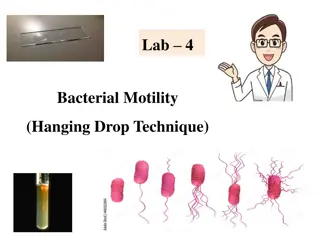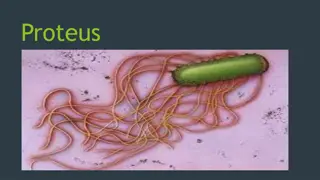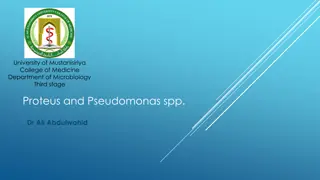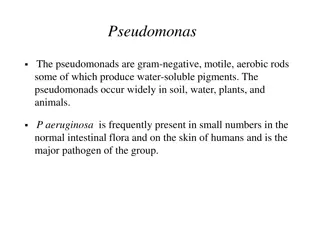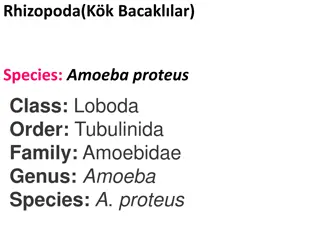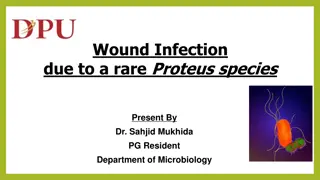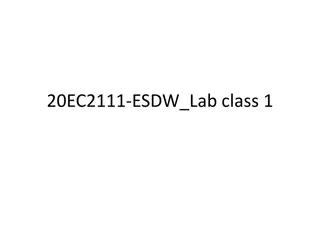Bacterial Motility Testing Using Hanging Drop Technique
The Hanging Drop Technique is a method used to determine the motility of bacteria by suspending them in a drop of fluid on a slide. This procedure involves preparing a hanging drop slide, inoculating the drop with bacteria, sealing it with petroleum jelly, and observing the organisms under a microsc
2 views • 17 slides
Microbiology Study: Hanging Drop Technique in Department of Microbiology, College of Medicine
In the Department of Microbiology at the College of Medicine, the Hanging Drop Technique is utilized to study live microorganisms. This technique involves suspending microorganisms in fluid on a hollow ground slide, allowing for observation of their morphology under a microscope. By creating a wet m
0 views • 8 slides
Understanding Proteus Bacteria: Historical Significance, Pathogenesis, and Laboratory Diagnosis
Proteus species, named after the Greek god Proteus, exhibit pleomorphism. Their historical importance stems from the unique characteristics of H and O antigens, with flagellated strains resembling a thin film on agar. Pathogenically, Proteus mirabilis and P. vulgaris are opportunistic pathogens caus
0 views • 12 slides
Microbiology Lab: The Hanging Drop Preparation
Learn how to prepare living microorganisms for microscopic study using the hanging drop technique. This method involves suspending microorganisms in a fluid and creating a hanging drop on a hollow ground slide, allowing for observation of morphology and motility. Follow step-by-step procedures to ma
0 views • 17 slides
Understanding Proteus Species: Morphology, Cultural Characteristics, and Antigenic Structure
Proteus species, specifically P. mirabilis and P. vulgaris, are important opportunistic pathogens in human infections. They exhibit unique characteristics such as swarming growth on agar, gram-negative coccobacilli morphology, and distinctive antigenic structures with O and H antigens. The swarming
2 views • 25 slides
Understanding Pseudomonas and Proteus Bacteria
Pseudomonas is a group of gram-negative, motile, and aerobic bacteria found in various environments, with Pseudomonas aeruginosa being a significant pathogen in humans. It can produce distinctive pigments and is resistant to many antimicrobial agents. Lab diagnosis involves culture testing on specif
0 views • 17 slides
Exploring Microorganisms: Amoeba, Radiolaria, and Sporozoa
Discover the fascinating world of microorganisms including Amoeba Proteus, Acanthometron Pellucidum, Heliosphaera Echinoides, and Plasmodium Vivax. Explore the unique characteristics and classifications of Rhizopoda, Radiolaria, and Sporozoa through detailed images and descriptions.
0 views • 24 slides
Rare Proteus Species Wound Infection: Case Study and Management
A 65-year-old male presented with a wound infection caused by a rare Proteus species on his left 2nd toe. The patient had a history of diabetes and previous angioplasty. Despite initial antibiotic therapy, amputation of the affected toe was required due to progressive infection. The causative pathog
1 views • 21 slides
Electronic Design Automation with Proteus Software Suite
Dive into the world of electronic design automation with the Proteus Design Suite, a powerful software tool primarily used by engineers and technicians to create schematics and printed circuit boards. Learn about the software's features, installation procedures, and PCB design capabilities, along wi
0 views • 22 slides
